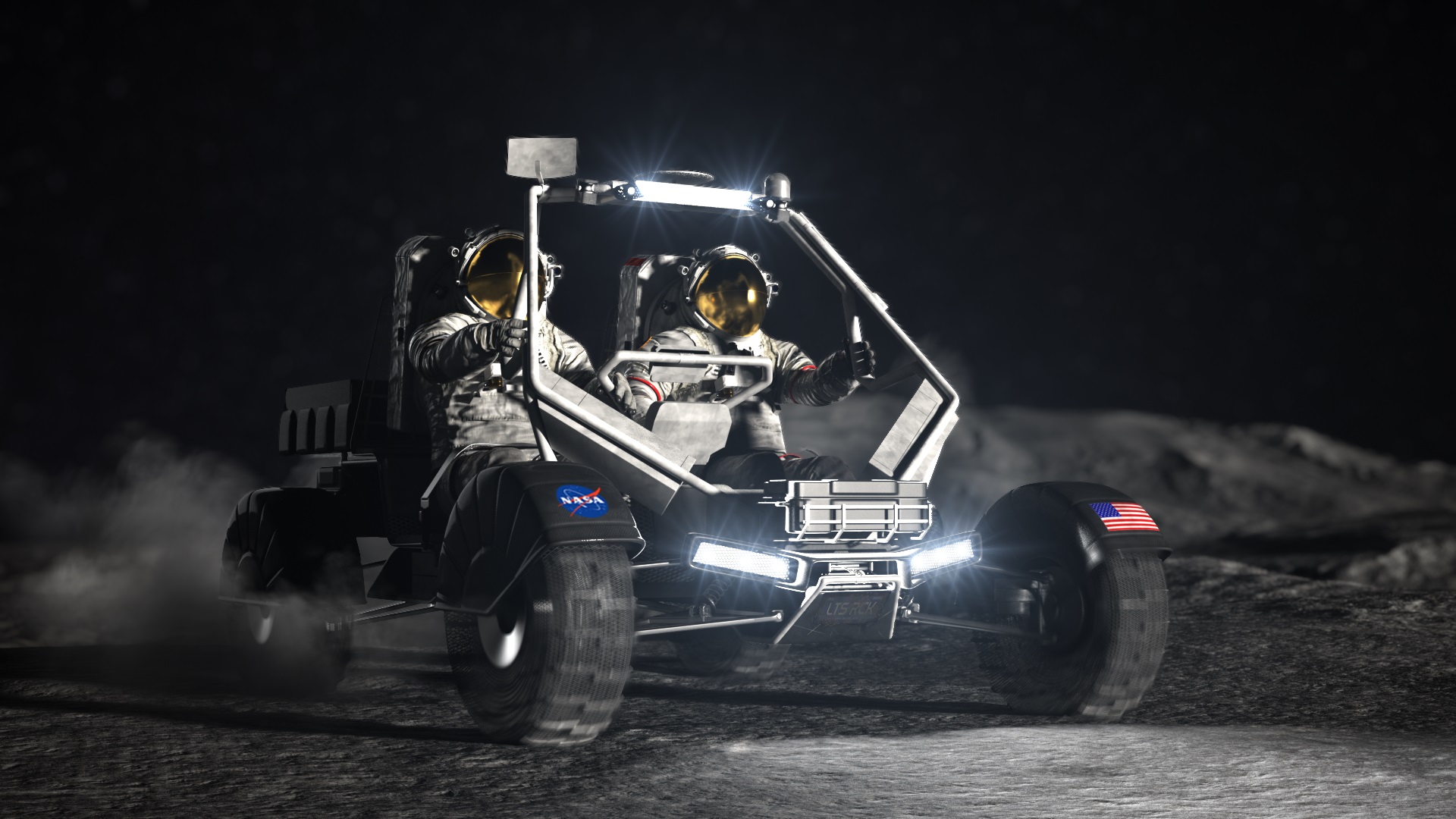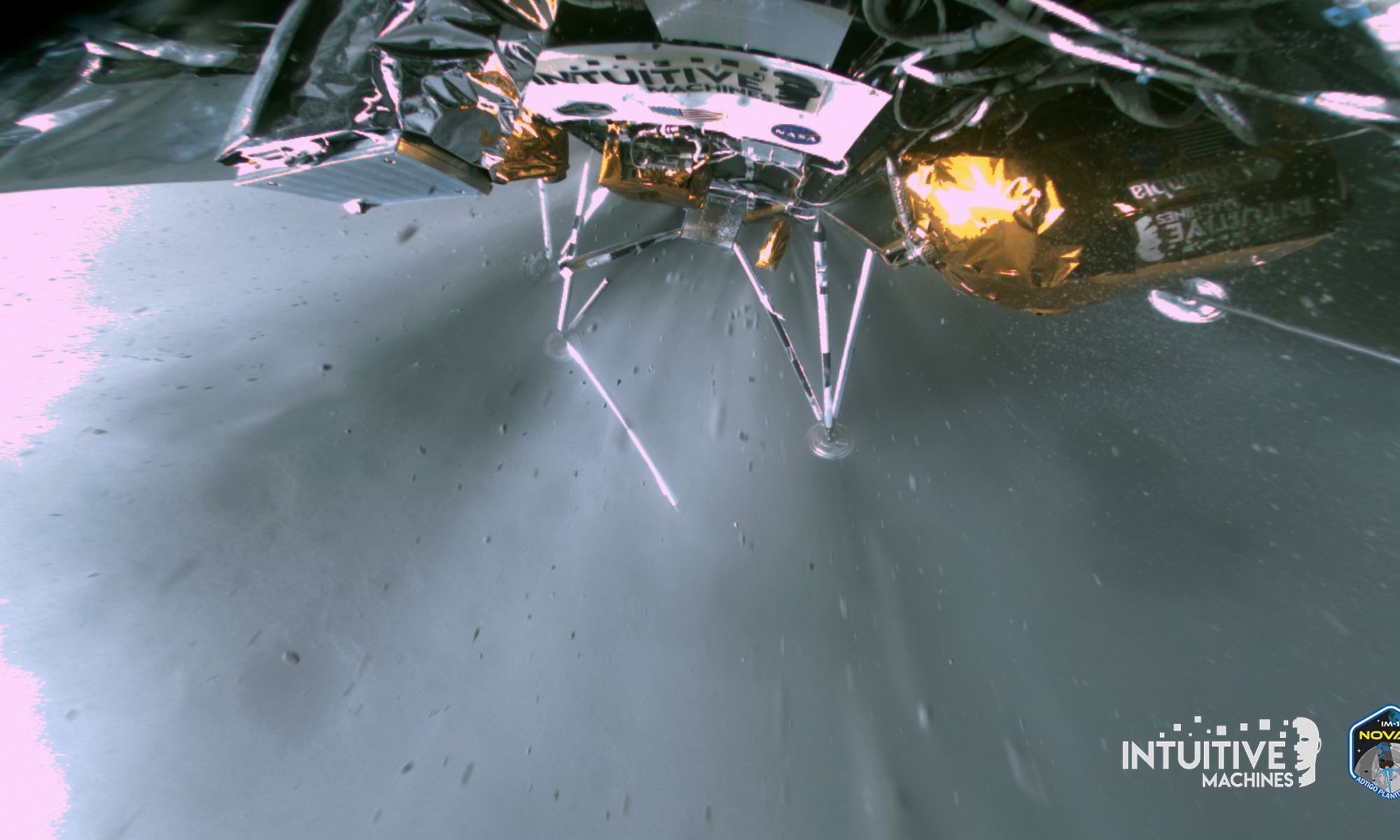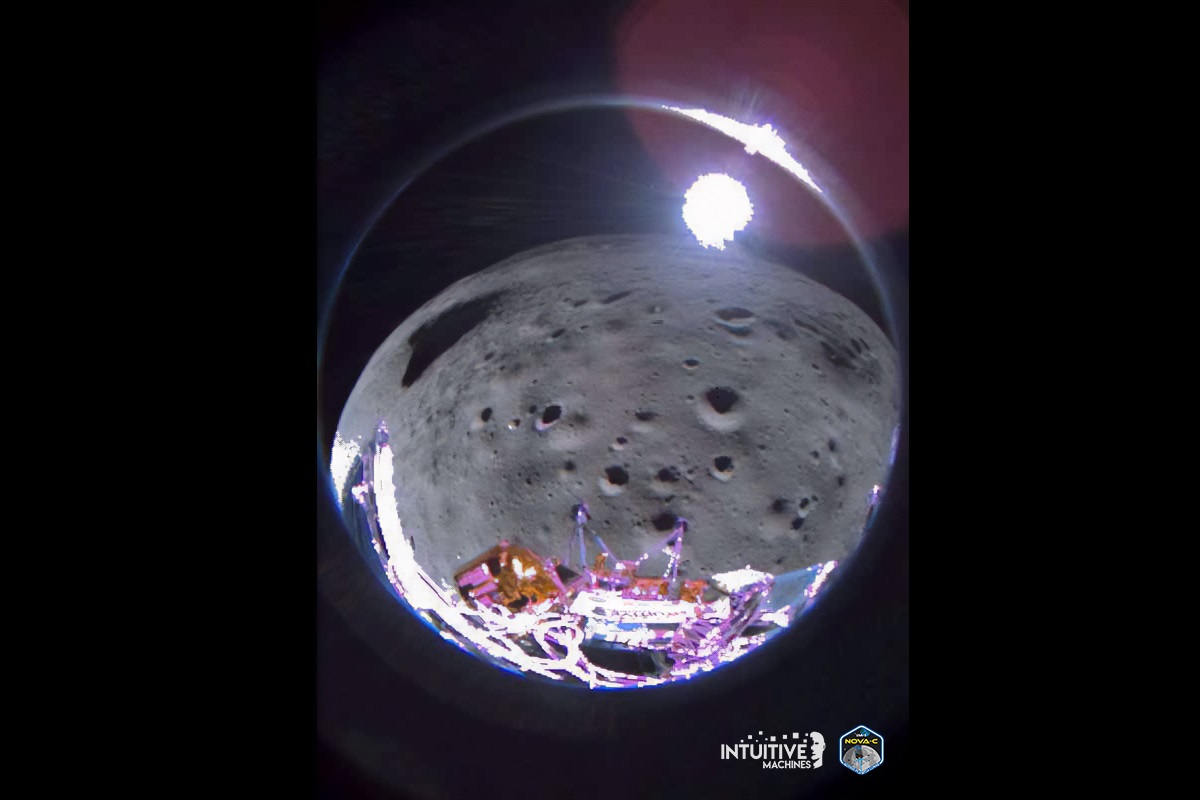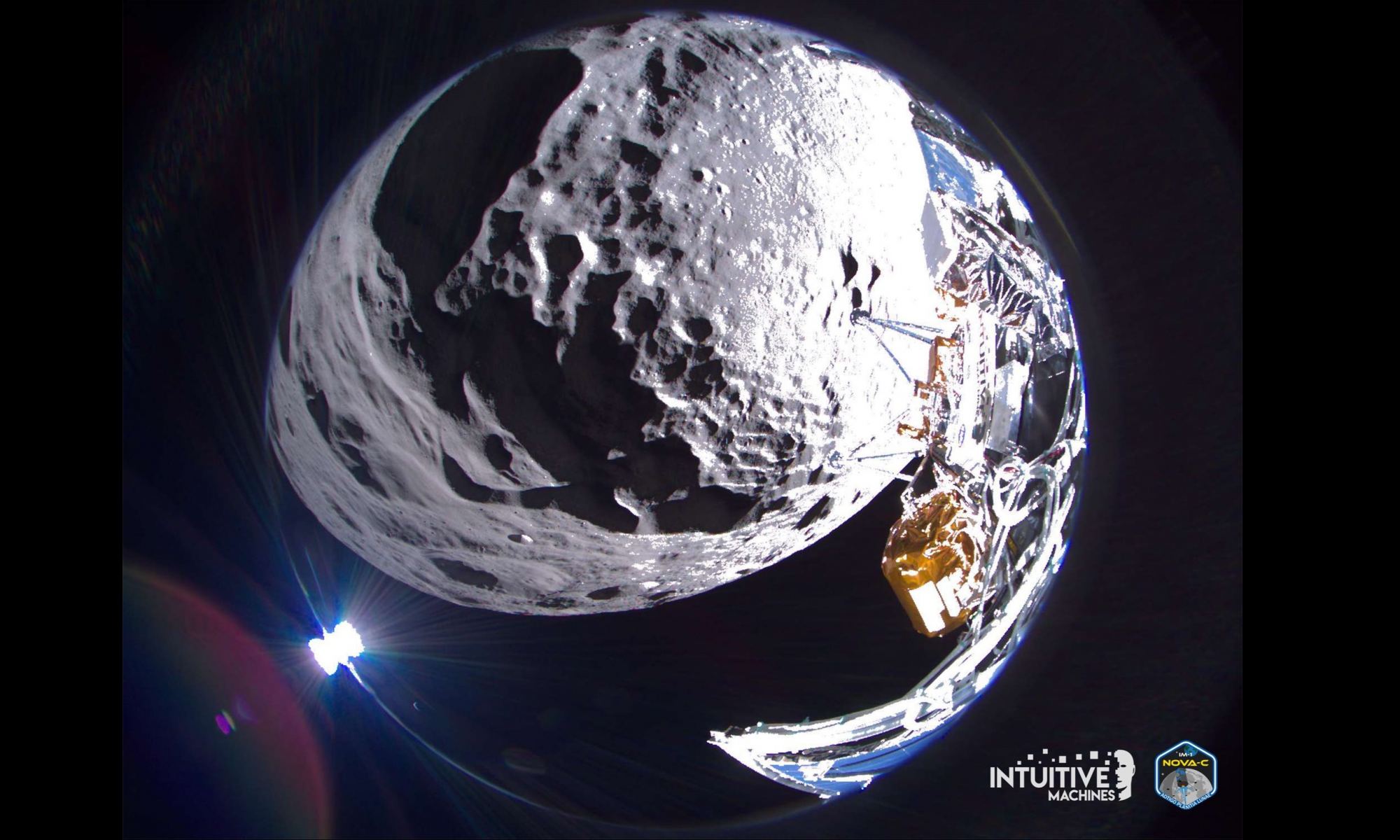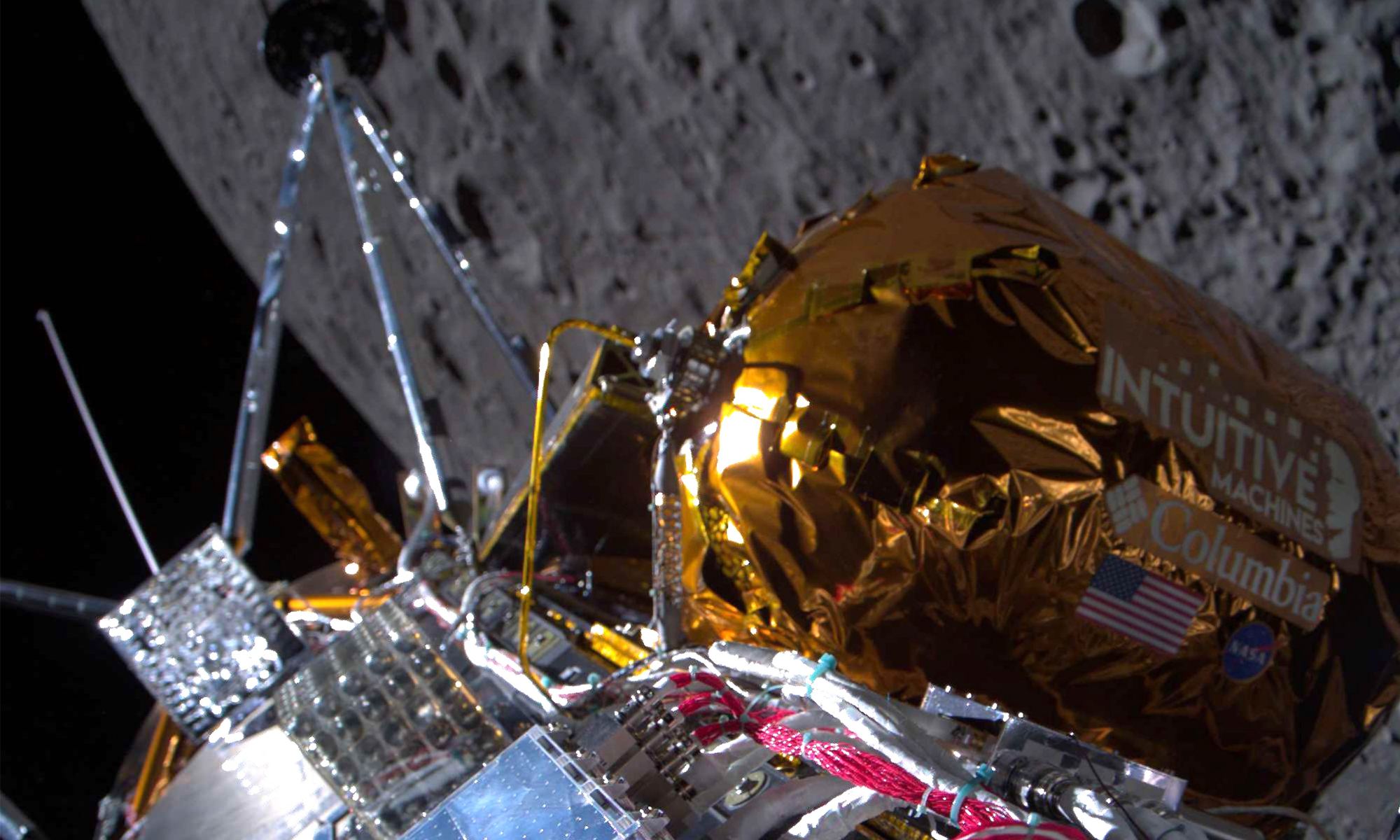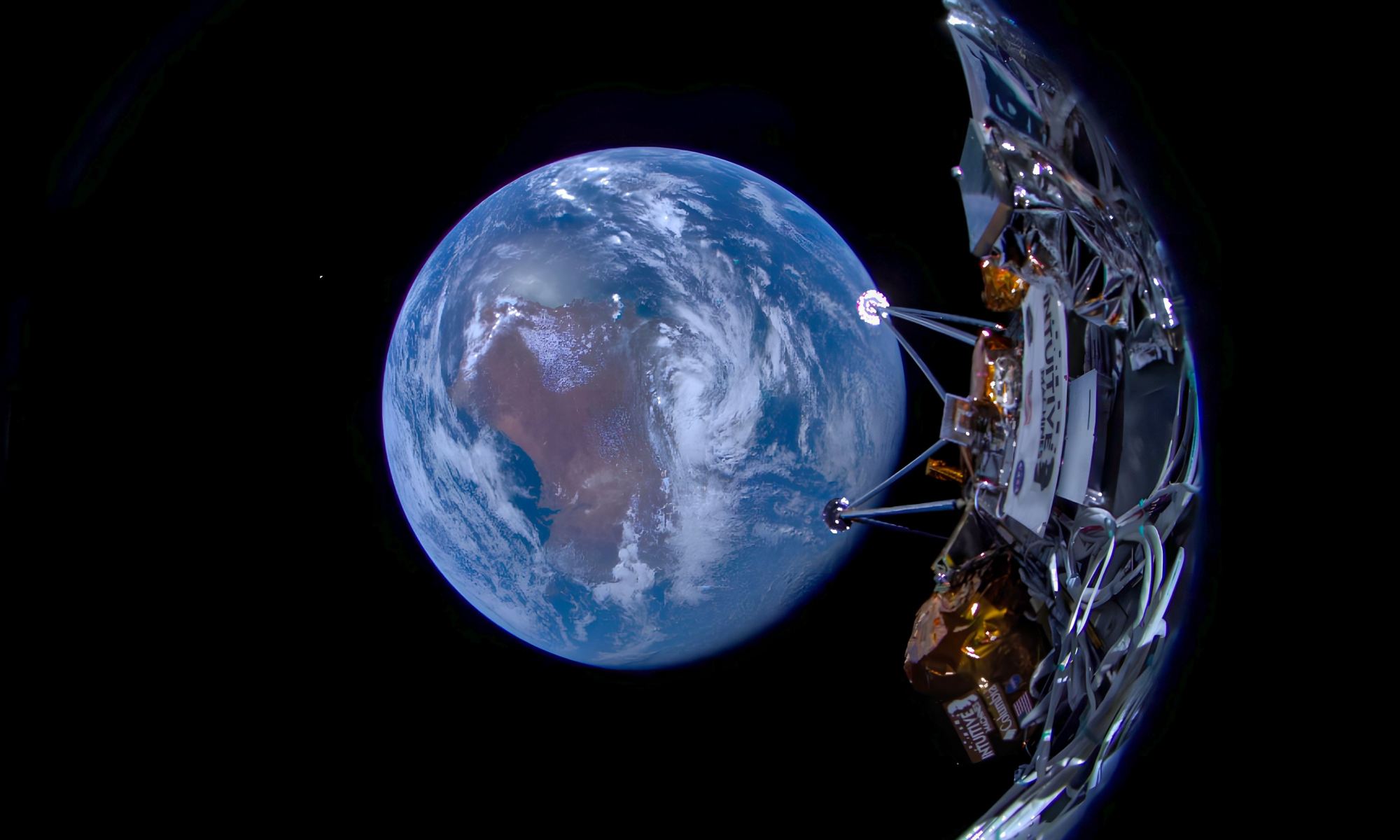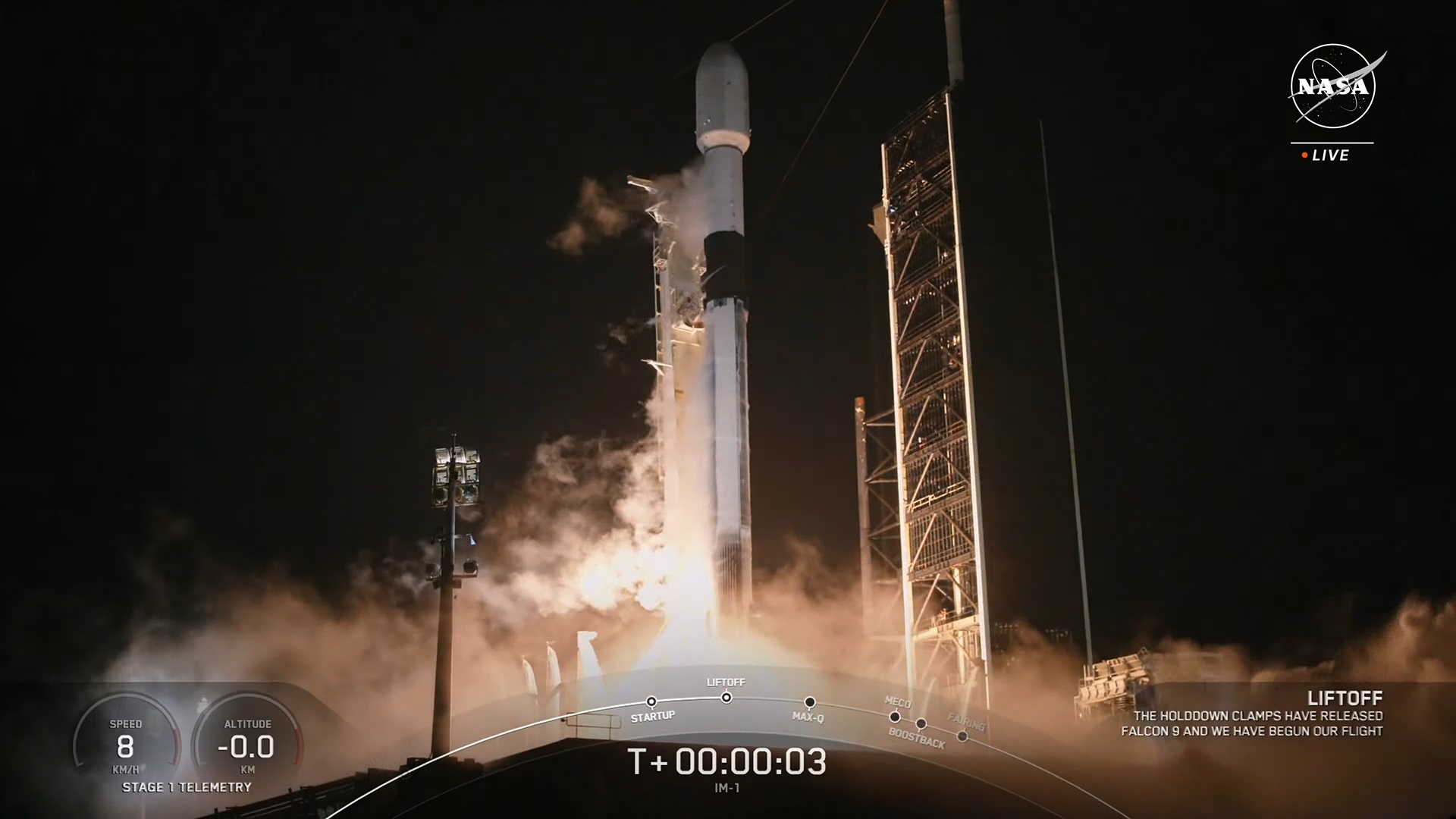Update: On March 23, Intuitive Machines said that its Odysseus lander failed to re-establish contact after the lunar night, and took that as confirmation that the spacecraft has “permanently faded after cementing its legacy into history as the first commercial lunar lander to land on the moon.”
Previously: Intuitive Machines says it’s putting its Odysseus moon lander to bed for a long lunar night, with hopes of reviving it once the sun rises again near the moon’s south pole.
The Houston-based company and NASA recapped Odysseus’s six days of operation on the lunar surface, shared pictures showing its off-kilter configuration, and looked ahead to the mission’s next phase during a briefing today at Johnson Space Center in Texas.
The original plan called for the solar-powered spacecraft to be turned off when the sun fell below the lunar horizon, but Intuitive Machines CEO Steve Altemus said mission controllers would instead put the Odysseus into hibernation and try restoring contact in three weeks’ time. “We are going to leave the computers and the power system in a place where we can wake it up and do this development test objective, to actually try to ping it with an antenna and see if we can’t wake it up once it gets power again,” he told reporters.
Continue reading “Odysseus Is Shut Down After Sending Snapshots From Moon Landing”


